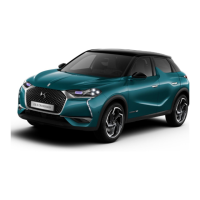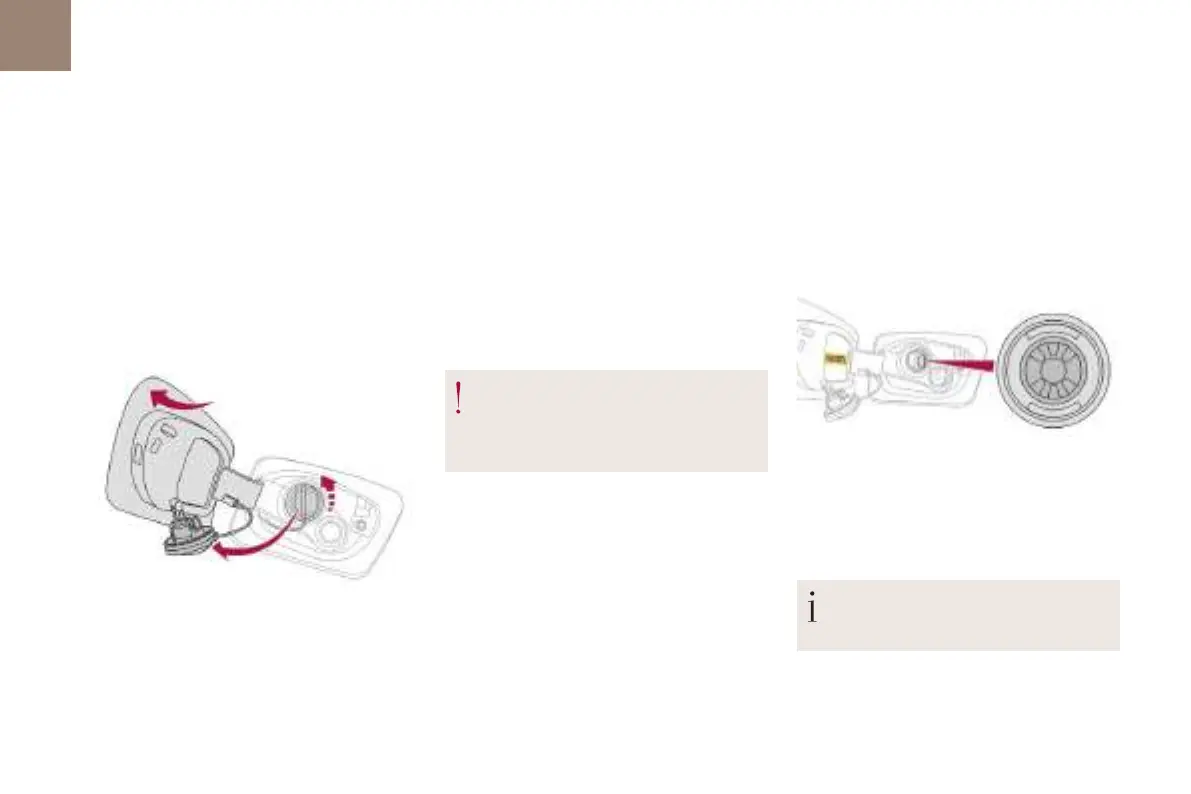07
154
Practical information
If you have put in the wrong fuel for the
vehicle, you must have the fuel tank
drained and filled with the correct fuel
before starting the engine.
The vehicle is fitted with a catalytic converter,
a device which helps to reduce the level of
harmful emissions in the exhaust gases.
For petrol engines, you must use unleaded
fuel.
The filler neck is narrower, admitting unleaded
petrol nozzles only.
Misfuel prevention (Diesel)
(Depending on country of sale.)
This mechanical device prevents filling the tank
of a Diesel vehicle with petrol.
Located in the filler neck, the misfuel
prevention device appears when the filler cap
is removed.
Operation
When a petrol filler nozzle is inserted into the
fuel filler neck of a
Diesel vehicle, it comes
into contact with the flap. The system remains
closed and prevents filling.
Do not persist but introduce a
Diesel type
filler nozzle.
It remains possible to use a
fuel can to fill
the tank.
Refuelling
A label inside the fuel filler flap reminds you of
the type of fuel to use.
Additions of fuel must be of at least 5 litres, in
order to be registered by the fuel gauge.
Opening the filler cap may create a noise
caused by an inrush of air. This vacuum is
entirely normal and results from the sealing of
the fuel system.
To refuel in complete safety:
F
You must switch off the engine.
F
With the vehicle unlocked, press the rear-
central part of the filler flap to open it.
F Take care to select the pump that delivers
the correct fuel type for the vehicle's engine
(see a reminder label on the inside of the
filler flap).
F Turn the filler cap to the left.
F
Remove the filler cap and hang it on its
carrier (on the filler flap).
F Introduce the filler nozzle and push it in as
far as possible before starting to refuel (risk
of blowback).
F
Fill the tank.
Do not continue past the third cut-off of the
nozzle, as this may cause malfunctions.
F
Refit the filler cap.
F
Turn it to the right.
F
Push the filler flap to close it.

